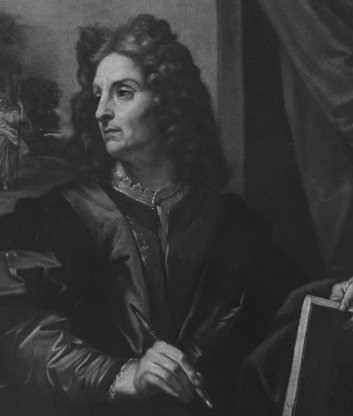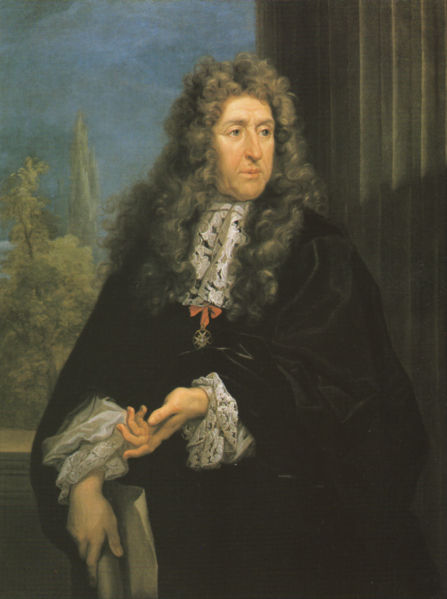Carlo Maratta (1625 – 1713)
Get a Maratta Certificate of Authenticity for your painting (COA) for your Maratta drawing.
For all your Maratta artworks you need a Certificate of Authenticity (COA) in order to sell, to insure or to donate for a tax deduction.
Getting a Maratta Certificate of Authenticity (COA) is easy. Just send us photos and dimensions and tell us what you know about the origin or history of your Maratta painting or drawing.
If you want to sell your Maratta painting or drawing use our selling services. We offer Maratta selling help, selling advice, private treaty sales and full brokerage.
We have been authenticating Maratta and issuing certificates of authenticity since 2002. We are recognized Maratta experts and Maratta certified appraisers. We issue COAs and appraisals for all Maratta artworks.
Our Maratta paintings and drawings authentications are accepted and respected worldwide.
Each COA is backed by in-depth research and analysis authentication reports.
The Maratta certificates of authenticity we issue are based on solid, reliable and fully referenced art investigations, authentication research, analytical work and forensic studies.
We are available to examine your Maratta painting or drawing anywhere in the world.
You will generally receive your certificates of authenticity and authentication report within two weeks. Some complicated cases with difficult to research Maratta paintings or drawings take longer.
Our clients include Maratta collectors, investors, tax authorities, insurance adjusters, appraisers, valuers, auctioneers, Federal agencies and many law firms.
We perform Carlo Maratta art authentication, appraisal, certificates of authenticity (COA), analysis, research, scientific tests, full art authentications. We will help you sell your Carlo Maratta or we will sell it for you.

Carlo Maratta was an Italian painter of High Baroque, active mostly in Rome. Born in Camerano (Marche), then part of the Papal States, and died in Rome. He came as a boy of 12 to apprentice in the studio of Andrea Sacchi. Like Sacchi, his paintings have a classicizing tone, inspired by the works of the great painters from Parma and Bologna: Carracci, Guercino, and Lanfranco. He developed a close relationship with Sacchi till the death of his master in 1661. He worked alongside Francesco Cozza, and Domenico Maria Canuti in the decoration of the Palazzo Altieri.

His first prominent work is an Adoration of the Shepherds for San Giuseppe die Falegnami in 1650. He came to establish one of the most prominent art studios in Rome of his time. Other major works are the The Mystery of the Trinity Revealed to St. Augustine (c. 1655) painted for the church of Santa Maria dei Sette Dolori, The Appearance of the Virgin to St. Philip Neri (c. 1675) now in the Pitti Palace of Florence, The Virgin with Saints Carlo Borromeo and Ignatius of Loyola and Angels (c. 1685) for the church of Santa Maria in Vallicella, and The Assumption of the Virgin with Doctors of the Church (1689) for Santa Maria del Popolo, . His numerous depictions of the Virgin earned him the nickname Carluccio delle Madonne (“Little Carlo of the Madonnas”).

The style of Maratta is a classicized Baroque, more restrained and composed than the styles of Cortona and Carracci, thus more allied to the traditions of Sacchi, Albani, and Reni. He was one of the artists favored by Giovanni Bellori. Maratta was known for his insightful portraiture.

In 1650, Maratta was introduced to pope Alexander VII, who commissioned many paintings including one of his greatest works, a painting of Constantine destroying the idols for the Baptistry of the Lateran. This work brought Maratta increased fame in the Vatican, and in 1704 Maratta was knighted by pope Clement XI. Other works include an altarpiece in the San Francesco Saverio Chapel of the Church of the Gesu, in the right transept. He died at Rome.

Maratta’s Roman studio was extremely prolific, and he hired numerous younger pupils/assistants. Among his many pupils were:
Painter |
Dates |
Birthplace |
Martino Altomonte |
|
|
Jean Andre |
1662-1753 |
Paris |
Cosmas Damian Asam |
|
|
Gérard Audran |
|
|
Giovanni Raffaelle Badarocco |
1648-1726 |
Genoa |
Antonio Balestra |
1666-1740 |
Verona |
Nicolo Bambini |
1651-1736 |
|
Niccolo Berrettoni |
1637-1682 |
Montefeltro |
Jean Christian le Blond |
1670- |
Frankfort |
Francesco Boccacino |
1680-1750 |
Cremona |
Jean Dominic Bruggieri |
1678-1754 |
Lucca |
John van Bunninck |
1654- |
|
Giacinto Calandrucci |
1646-1707 |
|
Giuseppe Bartolomeo Chiari |
|
|
Marc van Duvende |
1674-1729 |
|
Girolamo Ferroni |
1681 |
|
Antonio Filocamo |
1669-1748 |
Messina |
Paolo Filocamo |
|
|
Messina |
(H) |
|
Francesco Fernandi (Imperiali) |
1679-1740 |
|
William van Inghen |
1651-1709 |
Utrecht |
Francesco Juvani |
|
|
Godfrey Kneller |
1646-1723 |
Lübeck, moved to England |
Andrea Lanzano |
1651-1709 |
|
Joseph Laudati |
1672- |
Perugia |
Stefano Maria Legnani |
1661-1713 |
Milan |
Theodore van Loon |
1630-1678 |
Brussells |
Agostino Masucci |
1691-1758 |
Rome |
Giovanni Paolo Melchiore |
1664-1721 |
Rome |
Sebastian Munoz |
|
|
Girolamo Odam |
1681- |
Lorena |
Robert van Oudenarde |
1663-1743 |
Ghent |
Paolo Gerolamo Piola |
|
|
Pierre Parrocel |
|
|
Domenico Parodi |
|
|
Giuseppe Passeri |
1654-1714 |
Rome |
Pietro da Pietri |
1663-1708 |
Rome |
Stefano Pozzi |
1699-1768 |
Rome |
Andrea Proccaccini |
1671-1734 |
Rome |
Tommaso Redi |
1665-1726 |
Florence |
Giovanni Stefano Robato |
1649-1733 |
Savona |
Daniel Seiter |
1647-1705 |
Vienna, moved to Turin |
Filippo Tancredi |
1655-1725 |
Messina |
Lodovico Trasi |
1634-1695 |
Ascoli |
Francesco Trevisani |
|
|
Nicolas Vleys |
1694-1703 |
Brussels |
Still wondering about an Italian painting in your family collection? Contact us…it could be by Carlo Maratta.
Reviews
1,217 global ratings
5 Star
4 Star
3 Star
2 Star
1 Star
Your evaluation is very important to us. Thank you.
